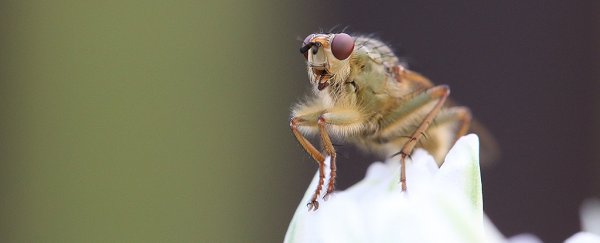Not long ago, a lengthy drive on a hot day wouldn't be complete without scraping bug guts off a windshield. But splattered insects have gone the way of the Chevy Nova - you just don't see them on the road like you used to.
Biologists call this the windshield phenomenon. It's a symptom, they say, of a vanishing population.
"For those of us who look, I think all of us are disturbed and all of us are seeing fewer insects," said Scott Black, executive director of the Portland, Oregon-based Xerces Society, a nonprofit environmental group that promotes insect conservation.
"On warm summer nights you used to see them around streetlights."
The windshield phenomenon is not just a trick of Trans Am nostalgia. A small but growing number of scientific studies support the notion of insects on the wane.
"The windscreen phenomenon is probably one of the best illustrative ways to realise we are dealing with a decline in flying insects," said Caspar Hallmann, an ecologist at Radboud University in the Netherlands.
Hallmann is part of a research team that recently waded through 27 years' worth of insects collected in German nature preserves.
Between 1989 and 2016, according to a report published Wednesday in the journal PLOS One, the biomass of flying insects captured in these regions decreased by a seasonal average of 76 percent.
John Losey, an entomologist at Cornell University in New York who was not involved with this study, said he was impressed by the scope of the new research across time, space and habitat range.
Insects were collected at 63 locations in Germany, including grasslands, swamps, sand dunes, wastelands, shrub land and along the margins of human settlement.
All of the locations were protected areas. "This decline happened in nature reserves, which are meant to preserve biodiversity and ecosystem functioning," Hallmann said. "This is very alarming!"
Though some missing insects may be pests - bloodsuckers or crop-eaters - plenty of insects are productive members of a healthy ecosystem. (Even mosquitoes play a vital role as food sources for fish and other animals.)
In 2006, Losey and fellow Cornell entomologist Mace Vaughan estimated that wild insects provide $57 billion worth of custodial services in the United States each year. They bury animal dung, prey on pests and pollinate plants.
"If you like to eat nutritious fruits and vegetables, you should thank an insect. If you like salmon, you can thank a tiny fly that the salmon eat when they're young," Black said.
"The whole fabric of our planet is built on plants and insects and the relationship between the two."
What made this research particularly remarkable, Losey said, was the extent of the observed decline. Other estimates have put rates of global insect biomass loss at 50 percent or less - disturbing, but not as dismaying as the results from the German fieldwork.
Researchers caught insects in what's called a malaise trap. Insects fly into the tented fabric, which funnels them into a collecting jar. The scientist gauged bug captures by mass. It's an assessment of abundance, not diversity, a measure that scientists call biomass.
At the end of 27 years, the insect biomass totalled nearly 54 kilograms - a weight of 120 pounds. The study authors said this mass represented millions of insects.
The most severe reduction over time in bug biomass appeared in summer months, when insects should be most active.
"Apparently, when insect densities are the highest, declines are most severe. Unfortunately we do not know why," Hallmann said.
Previous research focused on certain groups of insects, such as ladybugs or California's monarch butterflies, have also revealed sharp declines. "I'm not seeing any study that is showing insects are doing very well," Black said.
Hallmann said the German study should be "representative for parts of the world under similar conditions," which is to say a human-dominated landscape coupled with intensive agriculture. But he cannot make more-specific comparisons, because "similar data sets do not exist elsewhere, to our knowledge," he said.
The authors of the new study attempted to tease out the roots of the decline. The scientists' investigation into climatic changes and other variables, however, eliminated most "prime suspects," Hallmann said. (In fact, the temperature increase observed over the study period should have benefited flying insects, he said.)
One culprit could be the alteration of the landscape itself, the agriculture that surrounds the preserves. "This suggests a possible role for, for example, fertiliser and pesticide application," Hallmann said.
Yet even in the face of studies such as this, Black said, it's not entirely doom and gloom.
"Although I get depressed every time a study like this comes out," he said, "I see tens of thousands of everyday people engaged in managing their own little piece of Earth in a better way."
Helping these tiny helpers can take only a small effort, he said. Habitat restoration can be as simple as a garden with plants that flower throughout the year.
Unlike mammals, insects don't require vast tracts of land to be satisfied - a back yard blooming with native flowers will do.
2017 © The Washington Post
This article was originally published by The Washington Post.
